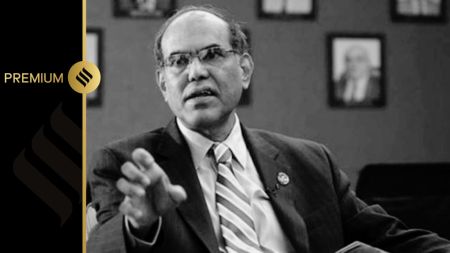- India
- International
Drosophila melanogaster: The story of the little pest and the famed prize
The 2017 Prize underlines the continuing importance of Drosophila in the world of genetics and the Nobel.
 Drosophila melanogaster is a prolific breeder and has a short generation time, and that its genome has just four pairs of chromosomes.
Drosophila melanogaster is a prolific breeder and has a short generation time, and that its genome has just four pairs of chromosomes.
“I am very pleased for the fruit fly,” Michael Rosbash, one of the three American scientists who won the Nobel Prize in Physiology or Medicine, 2017, told The Associated Press on Monday. Another of the Laureates, Jeffrey C Hall, said in an interview with nobelprize.org, “the key fourth awardee here is, as some of us call them, the little fly. (They) deserve another tip of the hat, I think…”
Rosbash, Hall and Michael W Young were awarded “for discoveries of molecular mechanisms controlling the circadian rhythm”, the internal clock that keeps organisms in sync with day/night cycles. In using the fruit fly (Drosophila melanogaster) in their work, the Laureates followed a road strewn with Nobels — beginning with Thomas Hunt Morgan, winner of the 1933 Prize, who started to breed fruit flies in his lab around 1905 in order to understand the then elusive transmitter of hereditary information: the gene, its role, structure, nature and
D. melanogaster was to go on to become the preferred choice of geneticists over more than a century for a range of reasons — the fact that it is a prolific breeder and has a short generation time, and that its genome has just four pairs of chromosomes.
After the genome was sequenced in 2000, it was found that an astounding 60% of fruit fly genes are also present in humans in a similar form. In an online explainer on “Why do scientists investigate flies?”, Germany’s Max Planck Society says that “around 75% of the genes which are known to cause illnesses in humans also occur in flies, (and) Drosophila possesses more than 90% of the genes that can trigger cancer in humans”.
Also Read | Nobel prize in Physiology or Medicine, 2017: What makes us tick

As scientists worked to create disease-free organisms (eugenics), it was discovered that it was easy to modify the fruit fly genome to understand how genotype alters phenotype (outward appearance). Thus continued Drosophila’s association with genetics.
After Morgan, Herman Muller, who had worked with him in the “Fly Room”, won the 1946 Prize in Physiology or Medicine for discovering that the fruit fly gene could be altered by radiation. George W Beadle who, along with Edward L Tatum won one half of the 1958 Prize (the other half was won by Joshua Lederberg) “for their discovery that genes act by regulating definite chemical events”, was also Morgan’s student in the Fly Room. In 1995, three development biologists, Edward B Lewis, Christiane Nüsslein-Volhard and Eric F Wieschaus, won the Prize for discovering the role of key genes in the development of the fruit fly embryo that also plays a crucial role in human embryonic development.
The 2017 Prize underlines the continuing importance of Drosophila in the world of genetics and the Nobel.
More Explained
EXPRESS OPINION
May 03: Latest News
- 01
- 02
- 03
- 04
- 05









































